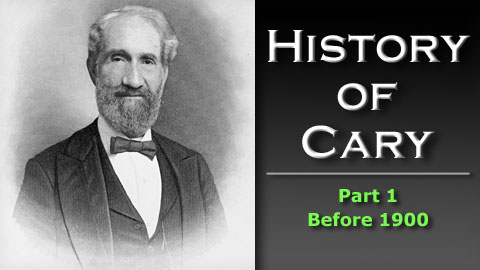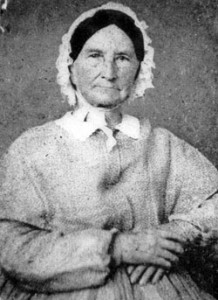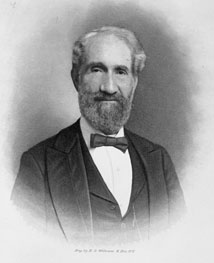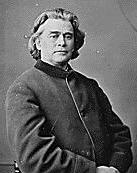History of Cary: Before 1900

Guest columnist and Cary author Peggy Van Scoyoc shares a brief history of Cary, NC before 1900 in this first of a three part series.
The First Settlers
Francis Jones, the first white settler, arrived in Cary in 1749. His son Nathaniel eventually owned what is the western half of modern-day Cary.

Nancy Jones
An unrelated Nathaniel Jones owned the eastern half, and upon his death, freed his slaves in 1815. His daughter created a stagecoach stop in her home, the Nancy Jones House, on the Raleigh-Chapel Hill route along Highway 54. The house still stands.
In 1794, John Bradford arrived and built an “Ordinary” or inn. Eli Yates arrived in 1838. He and his four sons owned sawmills and gristmills, including Yates Mill in Raleigh.
Cary exists because of the North Carolina Railroad, chartered in 1849. The rails were run through Cary because the topography was level. In 1852 Yates gave the right of way and some land to the railroad.
A Lumberman Named Page

Frank Page
A lumberman named Frank Page arrived in 1854. He bought land adjacent to the railroad tracks and built his home and a sawmill where Cary’s town hall sits today.
By 1856, he opened a dry goods store and post office, and served as first postmaster. He donated land for a railroad station. In 1868 he built a hotel for train passengers, today’s Page-Walker Hotel.
He laid out the town in 1869, and in 1870 he donated land and lumber for a private boarding school at the head of Academy Street. He had the town incorporated in 1871 and became its first mayor.
Naming the Town

Samuel F. Cary
A staunch prohibitionist, after hearing a sermon by the prohibitionist preacher (and Union general) from Ohio, Reverend Samuel Cary, Frank named the town after him.
Harrison Wagon Company
By 1880, Robert Harrison opened the Harrison Wagon Company to manufacture wagons and buggies. He held five patents on farm implements. His manufacturing plant on Harrison Avenue (named for him) employed 75 men making it one of Wake County’s largest employers.
Next Week
Next week, Peggy covers the town from 1900 to 1945 in the second part of the History of Cary series.
———————————————————————————————–
SPONSOR –> This week’s CaryCitizen news is sponsored by FrantzForHouse.org.



I recommend “Both Sides of the Tracks: A Profile of the Colored Community, Cary, North Carolina” (1996) and “Both Sides of the Tracks II: Recollections of Cary, North Carolina 1860-2000” (2001), by Cary native Ella Arrington Williams-Vinson. As well as this link: http://www.indyweek.com/indyweek/african-american-neighborhood-stands-in-the-path-of-carys-growth/Content?oid=1206537 (gives a good amount of history after the news article).
Is there any information about Cary prior to the arrival of the first white settler? There were emancipated slaves and African American land owners in what is now Cary. Is there any information about that?
Very cool.